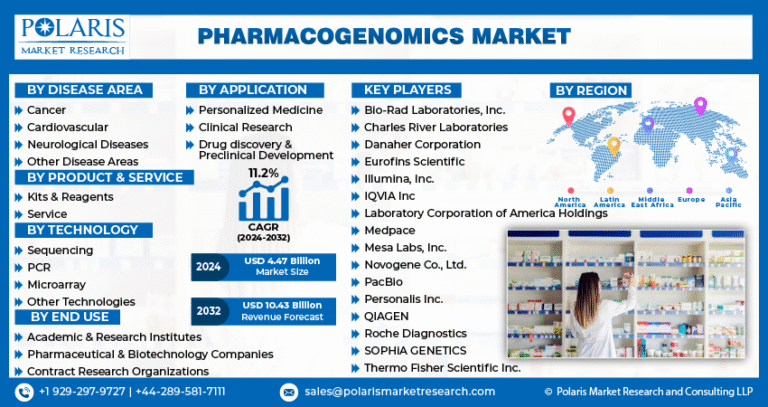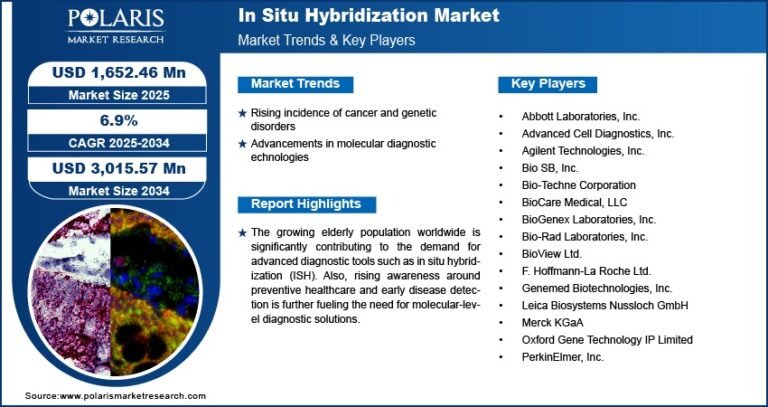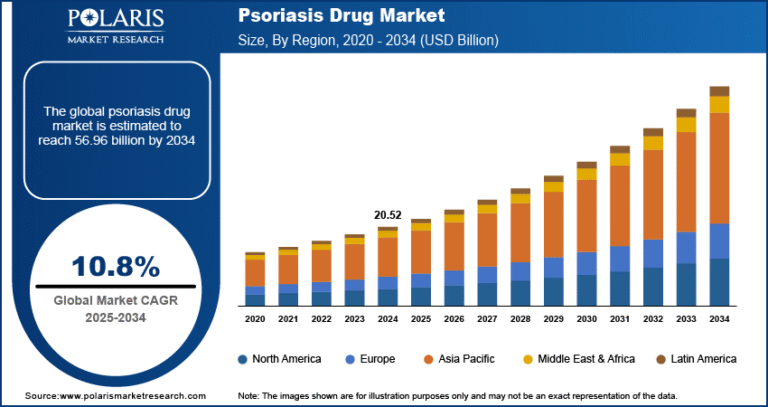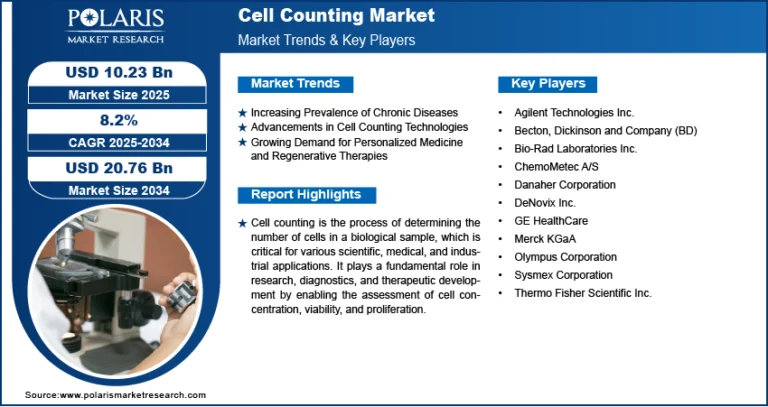Attention Deficit Hyperactivity Disorder Market Expected to Reach USD 30.2 Billion by 2034 | Growing at a CAGR of 5.90%
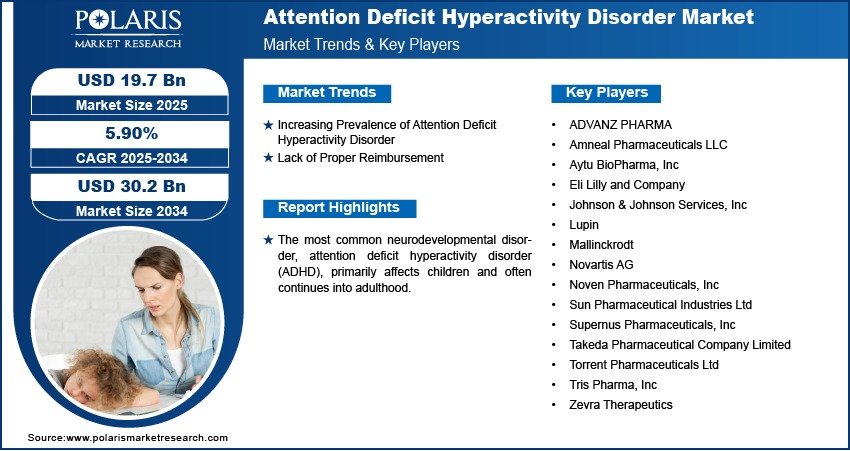
The global ADHD market was valued at USD 18.6 billion in 2024 and is projected to grow at a CAGR of 5.90% from 2025 to 2034. Rising diagnosis rates and growing awareness of mental health are driving consistent market expansion.
Key Market Trends – Attention Deficit Hyperactivity Disorder (ADHD) Market
- Rising Diagnosis Rates in Adults
While ADHD has historically been associated with children, increasing awareness and improved diagnostic protocols are driving a rise in adult ADHD diagnoses. This is expanding the target population for treatment, especially in developed regions. - Shift Toward Non-Stimulant Therapies
Concerns over the long-term effects and potential misuse of stimulant medications are leading to a shift toward non-stimulant options, including extended-release formulations and novel mechanisms of action. - Integration of Digital Therapeutics
Digital tools, such as cognitive training apps and remote behavioral therapy platforms, are gaining momentum as adjuncts or alternatives to pharmacological treatments, especially among younger demographics. - Focus on Personalized Medicine
Advancements in genetics and neuroimaging are paving the way for personalized ADHD treatment approaches, optimizing therapy plans based on individual patient profiles and reducing trial-and-error prescribing. - Increased Research in Comorbid Conditions
A growing body of research focuses on the intersection of ADHD with other mental health disorders such as anxiety, depression, and learning disabilities, leading to more integrated treatment options. - Expansion in Emerging Markets
Improving mental health infrastructure and increased awareness in countries across Asia-Pacific and Latin America are fueling demand for ADHD diagnosis and treatment, driving market expansion in these regions. - Regulatory Approvals of Novel Drug Formulations
Regulatory agencies are approving new, long-acting, and once-daily ADHD medications that improve compliance and minimize side effects, contributing to product innovation in the market.
Market Size & Forecast
Market size value in 2025 USD – 19.7 Billion
Revenue forecast in 2034 USD – 30.2 Billion
CAGR – 5.90% from 2025 – 2034
Request for Free Sample:
Industry Overview:
The Attention Deficit Hyperactivity Disorder (ADHD) market encompasses a range of treatment options, including prescription medications (stimulants and non-stimulants), behavioral therapies, digital therapeutics, and diagnostic services aimed at managing the symptoms of ADHD. The condition, which affects both children and adults, is characterized by inattention, hyperactivity, and impulsivity, significantly impacting academic, professional, and social functioning. As awareness and diagnosis rates increase globally, the ADHD market has seen steady growth, supported by pharmaceutical innovation, rising healthcare expenditure, and expanding access to mental health services.
Key Market Drivers & Barriers:
A primary driver of the ADHD market is the growing recognition of mental health disorders and increased screening among pediatric and adult populations. Rising government and private funding for research into neurodevelopmental disorders, along with advancements in drug development and digital therapeutics, also support market expansion. However, concerns regarding the misuse and abuse potential of stimulant medications, regulatory hurdles in drug approvals, and stigma associated with ADHD diagnosis pose challenges. Additionally, limited access to specialized care in low-income regions and the high cost of long-term treatment can restrict market penetration.
Market Opportunity:
The ADHD market offers significant opportunities in the development of novel therapies, including non-stimulant medications and FDA-approved digital treatments such as video game-based therapeutics. Expansion into emerging markets in Asia-Pacific, Latin America, and Africa—where awareness and healthcare infrastructure are improving—provides substantial growth potential. There is also increasing demand for personalized medicine and companion diagnostics that enable tailored treatment approaches. With rising investment in mental health tech and growing acceptance of ADHD as a legitimate medical condition, the market is poised for sustained growth across both traditional and innovative treatment modalities.

